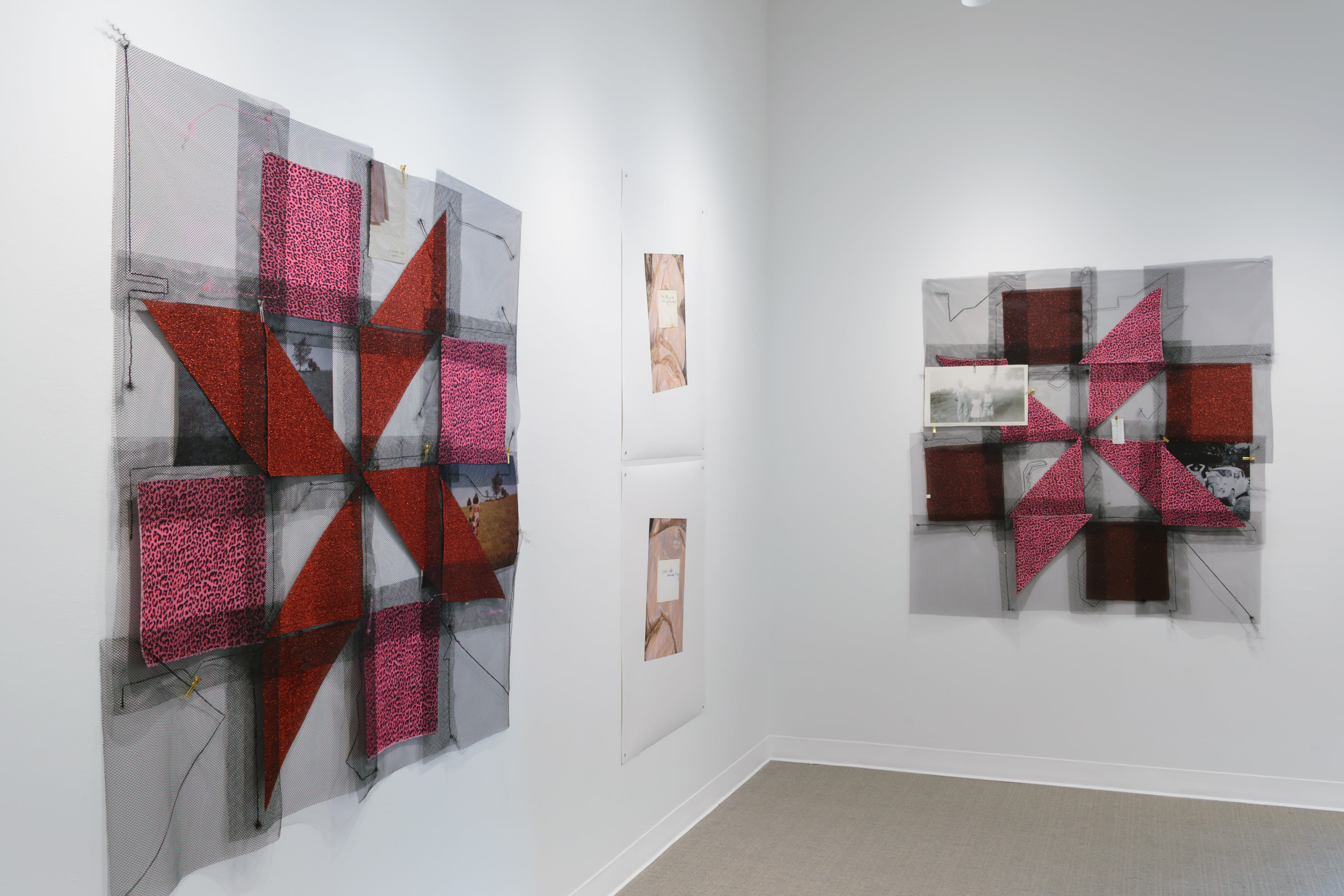Lisa Congdon Is Cataloging Herself
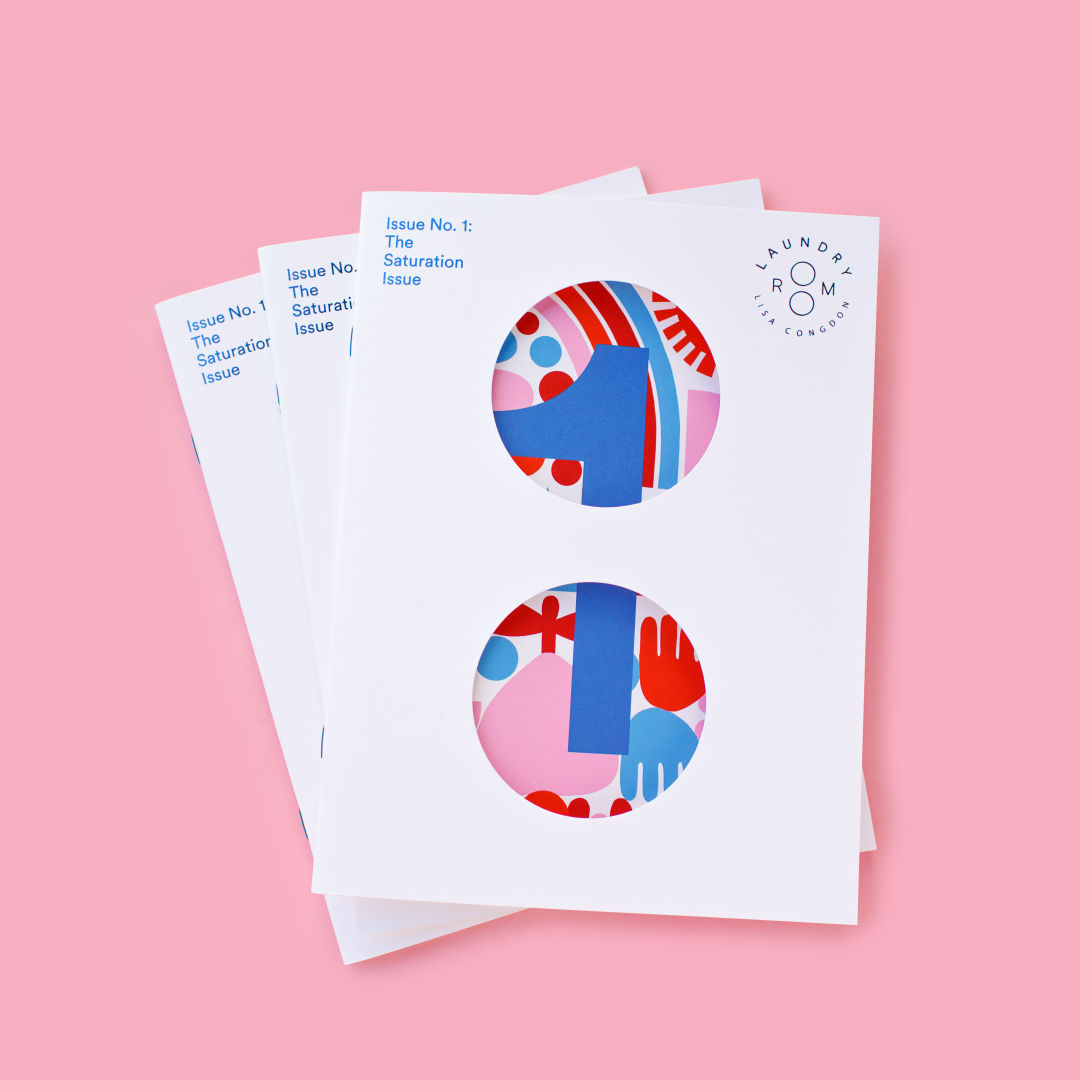
The first installment of Congdon’s quarterly self-published monograph is titled Saturation.
Image: Courtesy Lisa Congdon
Lisa Congdon moves in a lot of different directions. Maybe you’ve seen the Portland artist’s bright, folk art-inspired paintings on gallery walls, or her motivational typographic illustrations on magnets and calendars, or Method soap dispensers, or printed on a blouse, or a chair, or a plate. Her widely accessible animal motifs and geometric patterns—seen everywhere from Target to Rockefeller Center—are often paired with quotes borrowed from literature like, “You contain multitudes,” or phrases as simple as, “Nice to see you!”
Because she works across so many mediums, and many—like greeting cards and notepads—that are ephemeral by nature, Congdon’s work can be fleeting. That got her thinking about compendiums: wondering how to present years of diffuse work in a single spot. On September 8, Congdon announced Laundry Room, a series of quarterly, self-published, half-art-books-half-zines that would collect roughly 40 works current and past, covering the gamut of her practice. Some of Congdon’s 455,000 Instagram followers immediately jumped aboard, $72 price tag be damned. The limited run of 100 copies sold out in an hour.
“I'm not ready to have a full hardbound monograph yet, but it was important to me to document my work,” says Congdon. “I've never been precious, but maybe there is part of me that’s like, ‘Let's make something that’s special and unique not available at Target.’”
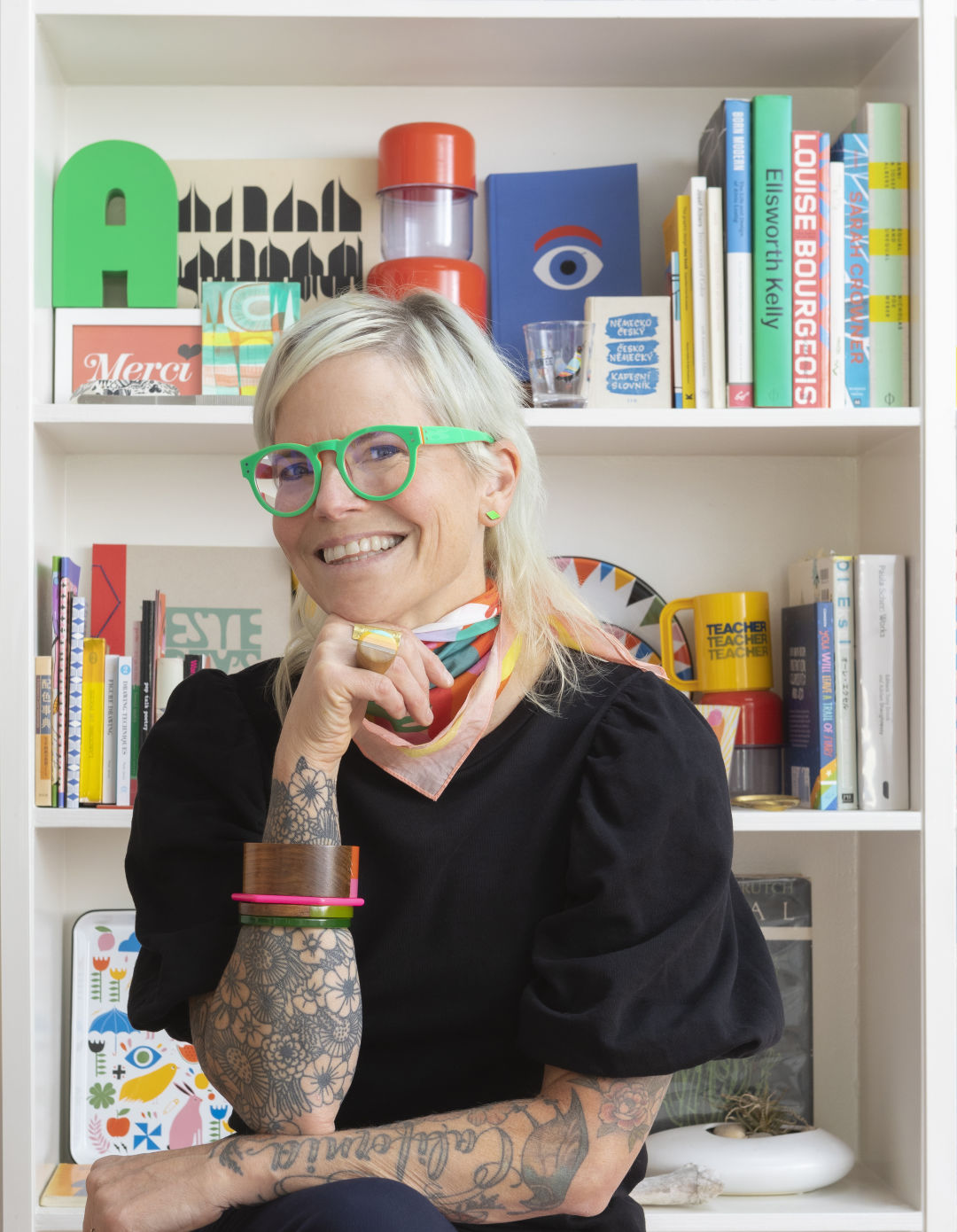
Lisa Congdon in studio
Image: Courtesy Lisa Congdon
For Congdon, laundry brings order to the madness of the world. Growing up, folding laundry meant bonding time with her mom and sister; now, the task functions as a sort of chaotic poetry between her and her wife—an avid ironer. “A soothing joint ritual in our relationship,” she calls it in the opening essay of Laundry Room’s inaugural issue, titled Saturation.
Laundry is restorative, but can also cement stains and decay your garments: it’s just one step in the process of the life of your clothes. Congdon writes that the same is true of her art. “We take the mess we are dealt (or that we create),” she says, “and we ritually attempt to make it presentable and good-smelling.”
Culling through her archives—digital, print, sketchbook, iPhone camera roll—Congdon applies the same re-presentation philosophy in this new series. No new works were produced for the publication, but, instead, existing pieces from the last seven years of Congdon’s practice are thrown together in various combinations to create relationships between ostensibly disparate pieces.
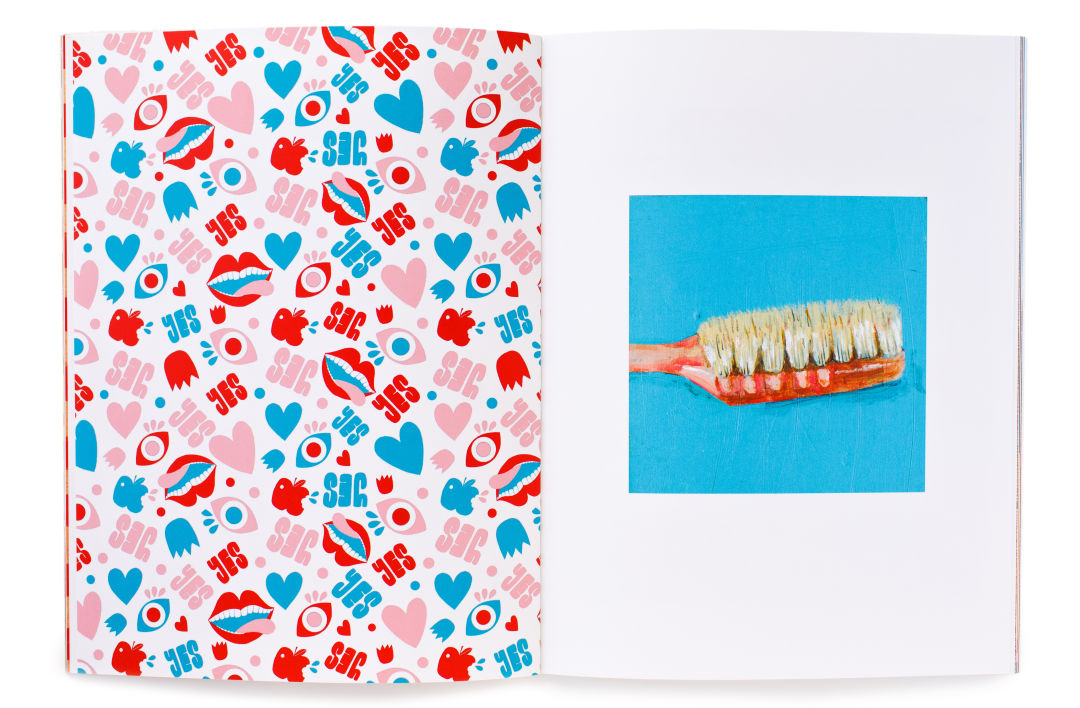
A painting of Frida Kahlo’s toothbrush and a digitally rendered pattern
Image: Courtesy Lisa Congdon
“I made this painting of Frida Kahlo’s toothbrush,” Congdon explains of one of the volume’s oldest works. Years after Kahlo’s death, her wardrobe and personal effects were unearthed and cataloged. “I was obsessed with that story, and then I got asked to create work for this traveling show of Frida Kahlo–related stuff,” says Congdon. Opposite the subdued, textural painting is a digitally rendered pattern with clean lines and a coincidentally similar color scheme, dotted in hearts and apples, with mouths repeating the word, “Yes.”
Traditionally, a monograph adds context to the art. But aside from that introductory essay, the first issue of Laundry Room is strikingly void of type—no captions, not even page numbers. “I toyed for a second with having some kind of index in the back, but I chose to just let people experience it for what it was,” she says.
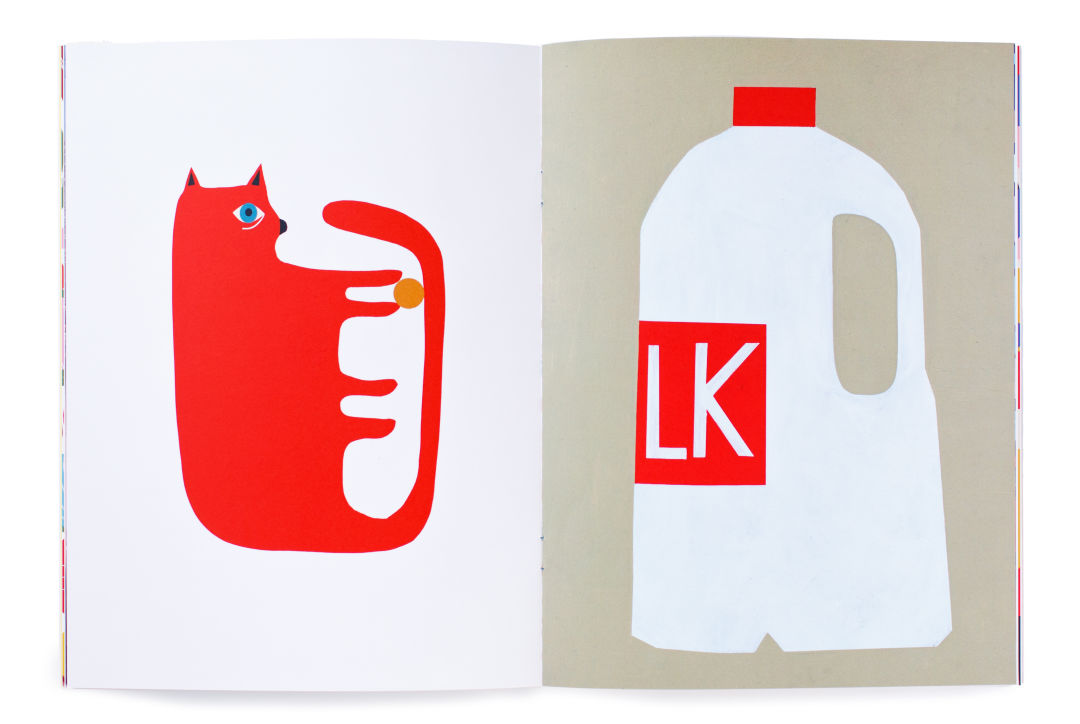
“I was being cheeky: the cat is next to the milk but those things were made at completely separate times. In fact, the milk carton is an acrylic painting that was in a show a few years ago, and the cat is a digital drawing.”
Image: Courtesy Lisa Congdon
Looking forward, Congdon plans to keep up with the quarterly publications as long as they hold her interest. Some issues may be printed in higher numbers, though always in limited quantities, and the price may change to reflect the processes involved.
“You grow and change as an artist, and we’re always so hyperfocused on the work that we’re currently doing,” says Congdon. “There's an opportunity [with this project] to play with my current and past work in a way that I couldn’t any other way.” A poem-as-care-label closes the last page of the first installment of Laundry Room, and it sweetly distills Congdon’s whole philosophy: “made with love / handle with care / revel in the ritual / enjoy the journey / this is life.”


